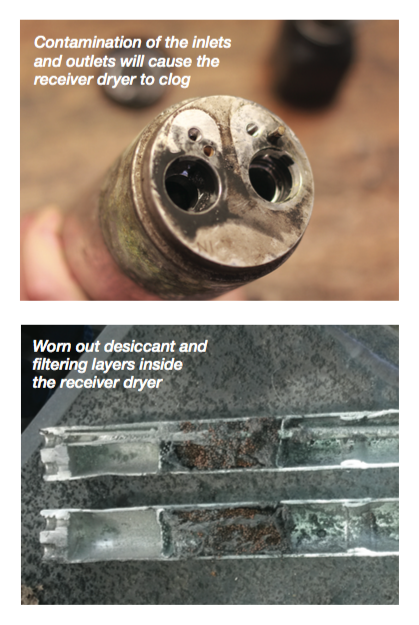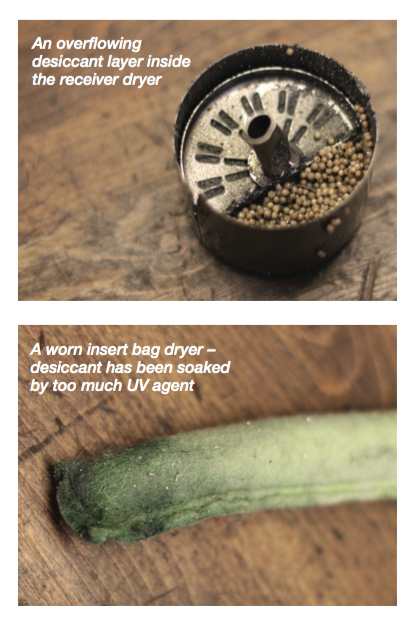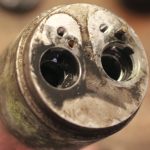Continuing its series of AC system technical articles, Nissens takes a look at the receiver dryer and when to replace it.
Background
The receiver dryer is a filtering unit located on the high-pressure side of the AC loop, between the condenser and the expansion valve. The part’s main role is to filter particles and debris flowing in the circuit, as well as to absorb any moisture. The receiver dryer also stores the refrigerant and lubricant.
Problem
The receiver dryer is crucial for optimal system operation and especially for the longevity and vitality of the compressor. Absorbing moisture in the AC system prevents inner corrosion and ensures proper system/compressor lubrication. In addition, particles, debris, metal chips, and other materials flowing in the loop, are filtered and kept away from the system components, preventing them from clogging (condenser, expansion valve, evaporator) or seizure (compressor).
If the receiver dryer is worn out, spoiled or not operating, it will eventually lead to circuit clogs, abnormal system pressures and, ultimately, lack of performance. This will seriously affect other system components, where the compressor is particularly at risk.
Under normal running conditions, both inlet and outlet lines of the dryer should feel warm and be more or less the same temperature. A cold outlet line or any frost spots on it is an indication that the filter has failed.
Recommended Solution
The receiver dryer must be regularly replaced. It is recommended that the receiver dryer is replaced every second year or whenever the circuit has been opened.
Always install a new receiver dryer any time the compressor is replaced and always when a serious leakage has been noticed and repaired. During service procedures, such as flushing the system, the part must be bypassed and replaced after the procedure is completed. Follow user manuals and manufacturers’ guidelines whenever applying additives such as UV dye agent, leak-stops, and/or flushing agents. Excessive volume or improper use of additives and/or oil will spoil the receiver dryer.
Avoid exposing a new dryer to the ambient air by, for example, removing sealing caps or leaving the circuit open without seals.
What can impact the receiver dryer function?
Wear
Filtering and desiccant layers are normally worn out after a period of time. This will cause the receiver dryer to lose its ability to properly filter the refrigerant and oil.
System opening
If the system is opened during service procedures or the system is leaking, the extremely hygroscopic desiccant will attract moisture from the air, thus losing the ability to remove any humidity from the system. Running the system empty due to leakages will also negatively impact the receiver dryer.
Excessive system pollution
Particles produced by chemical reactions caused by the wrong use of additives (flushing, leak-stop agents), wrong oil mixtures, particles from compressor seizure, inner corrosion and/or carbonised oil caused by overheating, can quickly soil and clog the receiver dryer.
Too much oil in the system
Excessive lubricant volumes reduce the dryer’s ability to filter the system properly as the desiccant and filter layers become too oily or saturated. Too much UV agent or flushing agent residue in the system will have the same effect on the receiver dryer.










